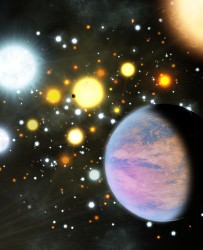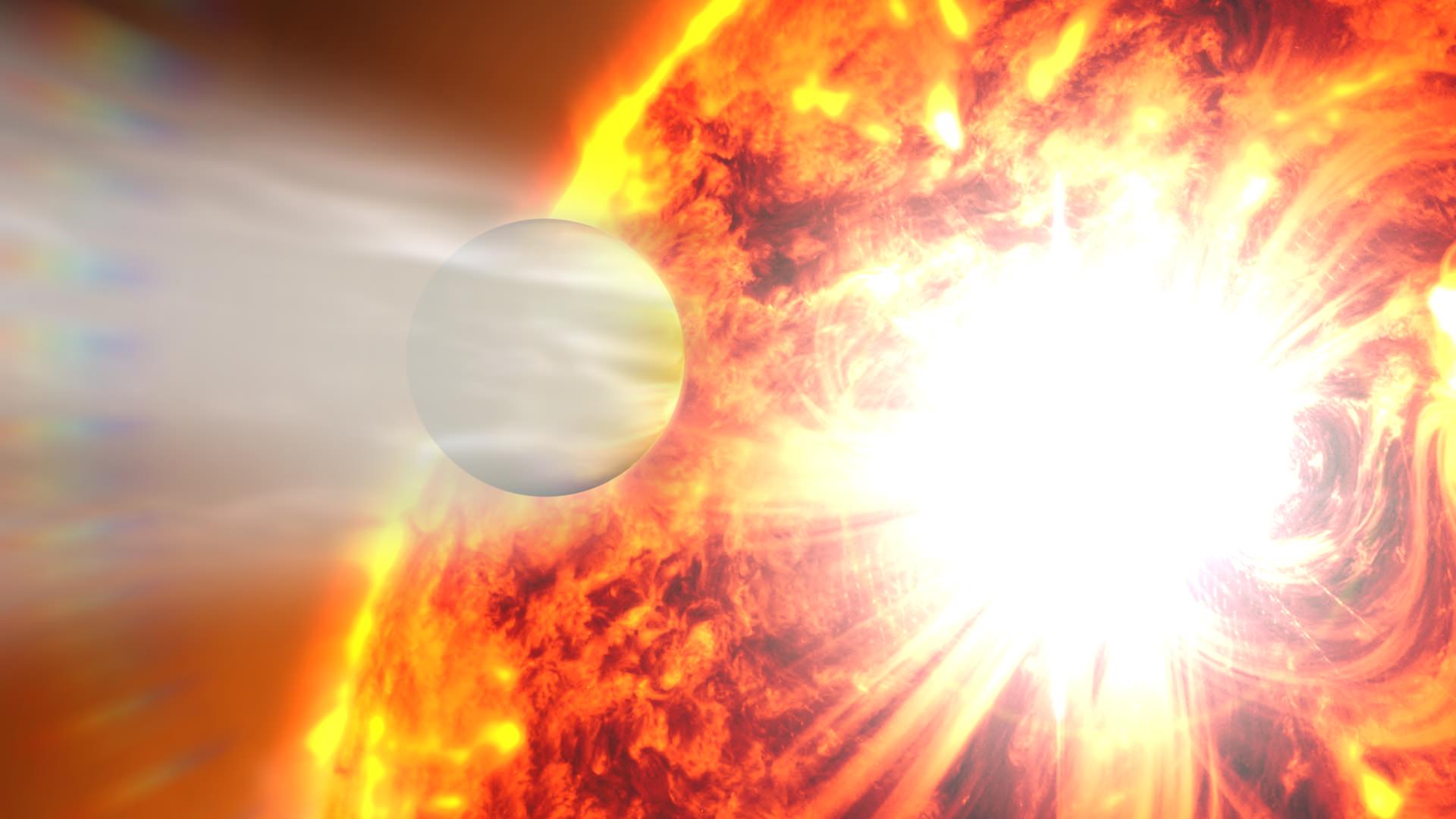As Earthlings, we’re so used to thinking about planets being in simple orbits around a single star. But the Sun likely didn’t begin its life alone. It formed as part of a cluster of stars, all feeding from the same well of gas.
Could star clusters also host planets? Or do they have to wait for the little guys until the stars evolve and move further apart? Well, astronomers have actually just found planets — yes, two planets — orbiting Sun-like stars in a cluster 3,000 light-years from Earth.
These are the third and fourth star cluster planets yet discovered, but the first found “transiting” or passing across the face of their stars as seen from Earth. (The others were found through detecting gravitational wobbles in the star.)
This is no small feat for a planet to survive. In a telescope, a star cluster might look pretty benign, but up close it’s pretty darn harsh. A press release about the discovery used a lot of words like “strong radiation”, “harsh stellar winds” and “stripping planet-forming materials” in a description of what NGC 6811 would feel like.

“Old clusters represent a stellar environment much different than the birthplace of the Sun and other planet-hosting field stars,” stated lead author Soren Meibom of the Harvard-Smithsonian Center for Astrophysics.
“We thought maybe planets couldn’t easily form and survive in the stressful environments of dense clusters, in part because for a long time we couldn’t find them.”
The find, as you would expect, comes from the prolific planet-hunting NASA Kepler spacecraft that is now battling problems with pointing in the right direction. Although the telescope is in the penalty box, there still are reams of data waiting to be analyzed and released.
The planets are known as Kepler-66b and Kepler-67b, and are both approaching the size of Neptune (which is four times the size of Earth). Their parent cluster, NGC 6811, is one billion years old. Astronomers are still puzzled as to how these little worlds survived for so long.
“Highly energetic phenomena including explosions, outflows and winds often associated with massive stars would have been common in the young cluster,” stated the journal paper in Nature.
“The degree to which the formation and evolution of planets is influenced by a such a dense and dynamically and radiatively hostile environment is not well understood, either observationally or theoretically.”
Check out the entire study in the latest edition of Nature.


I regard the artists conception as beautiful, but misleading: even in a dense cluster all but the ‘own’ star would appear as pointlike (though very bright) stars. This even holds for planets in multiple star systems.
I don’t think finding planets in clusters not too surprising, since a big portion of stars are born in clusters and planets meanwhile appear to be the rule rather than an exception.
The point is, how do they survive respectively are created fast enough. This seems to be a chellenge for standard models of planet formation.
Artist’s conceptions are all beginning to look the same to me. Unnecessary, too.
Why do you consider them unnecessary? They typically don’t take away from the article they accompany. We all realize that they’re only conceptual in nature, and many times they pique my curiosity.
The only exception to the “other” stars appearing point-like that I can think of would be where the stars are a close binary pair and the planet orbits the barycenter of the two and not just one of them.
I thought of system of multiple stars: the ones not orbited by a planet are so far away, that they appear point-like. The stars in a cluster are farther apart, when you consider, that multiple star systems are contained in clusters.
That tears it. Around small stars, large stars, as nomads, nommed by black holes, and now around urban star neighborhoods.
Space is littered by planets.